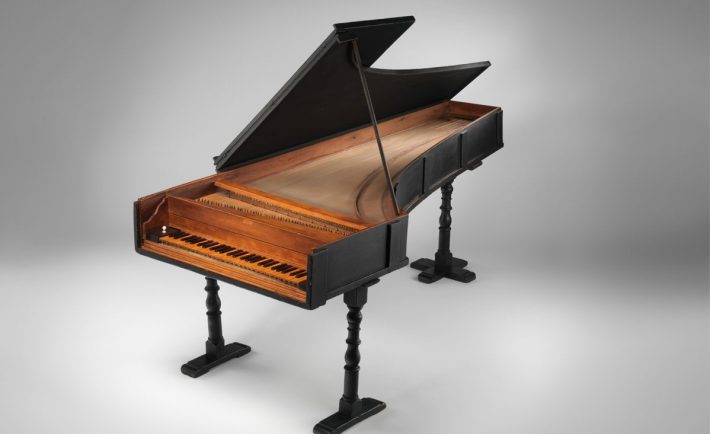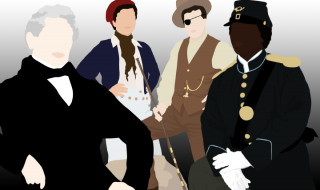
Would it surprise you to know that the piano that was invented 1709 is quite similar to the pianos being sold today? Despite huge leaps in technology over the past couple of centuries, the basic function of the piano haven’t actually changed much. We take a look back in time at the invention of the piano.
First we have to look at how a piano works. The sound made by a piano is created by the little hammers striking strings. Take a look inside a piano to find out how that looks.
Before the Invention of the Piano
The piano wasn’t the first stringed instrument that was struck by hammers to create sound. Long before the piano, back in the 14th century, there was the dulcimer.
A dulcimer is a box over which wires are stretched. The sound is produced by striking the wires with two wooden hammers.
After that, came the clavichord, then the spinet, clavecin, gravicembalo and then the harpsichord in the 15th century.
The harpsichord was very popular as it projected more sound than the instruments that came before it. More and more musicians began composing works for the keyboard.
However, the harpischord had only one volume, which was a disadvantage for musicians. It was difficult to convey a variety of musical expressions without being able to play louder and quieter. Think about when you are watching a slightly scary movie and the music starts quietly and then gets louder and louder and then suddenly goes very quiet again. That makes the scene more scary, doesn’t it?
The clavichord was slightly better in this respect, as it allowed the strings to continue to vibrate as long as the key was depressed. It wasn’t until the invention of the piano that musicians and composers could really incorporate keyboard works into an orchestra.
The Invention of the Piano
The piano was invented by a harprichord maker named Bartolemeo Cristofori in Padua, Italy. There is some uncertainty about the exact date of the invention of the piano, but it was around the year 1700. Originally named gravicembalo col piano e forte (soft and loud keyboard instrument), which was shortened to fortepiano or pianoforte, and then finally to piano.
There are just three Cristofori pianos around today – in the Met Museum in New York, in Museo Strumenti Musicali in Rome and the Museum for Musikinstrumente in Leipzig, Germany. The video above shows the one in the Met Museum being played by Domenico Scarlatti.
It took a little while for the new piano to catch on. One of the most prominent musicians of the time, Johann Sebastian Bach is said to have disliked the piano when he was first shown one. In fact, he’s said to have destroyed it with an axe! That was a bit rude, wasn’t it? He later came to approve of the piano, and like many other composers across Europe, began using one.
The piano was still very expensive though, and so were only owned by very rich nobles. The Cristofori piano was also not very loud, which limited the use of the instrument. It wasn’t suitable for use during a concert or opera as the other instruments drowned out the piano sound.
Other manufacturers were soon copying – and adapting – the fortepiano. During the 1760s, various manufacturers worked on new designs, including Americus Backers, John Broadwood, Sebastian Erard, Johann Andreas Stein and Anton Walters.
The Invention of the Square Piano
The shape of the piano changed, with the invention of the square piano from around 1760. Historians don’t know for sure who invented the square piano. Before long, variations of the piano were being made by a number of manufacturers around the world. If you’d like to learn more about the square piano, and the hunt to find the earliest instrument, this website is really fascinating.
The square piano was a much more affordable instrument, and was incredibly popular. They cost about half of the price of a harpsichord, starting at around £18 – which today would be about £1844. How do we know how much £18 would be worth today? From this awesome website which also tells you what you could buy for that sum of money. A skilled tradesman would have to work 180 days to pay for a square piano, so that gives you an idea of who could afford to buy one.
You can find out more about the further design developments of square pianos, and listen to the sound of these pianos here.
The Invention of the Upright Piano
By the end of the 1860s, upright pianos (sometimes called cabinet or cottage pianos) were taking over from square pianos. These instruments took up less space because the soundboard and the strings ran vertically not horizontally. The industrial revolution brought changes to piano manufacturers, with a rise in companies that supplied specific parts. These parts were used by piano manufacturers who no longer had to make every single part of the piano themselves. Relying on suppliers meant that pianos became less expensive. Even more people could afford to buy a piano.
What’s the difference between a Grand Piano and and Upright Piano?
Well obviously, the soundboard and strings are horizontal in a Grand Piano and vertical in an Upright Piano. That is actually the thing that makes the biggest difference between the two instruments. If you think of the little hammers that strike the strings – in a Grand Piano, they fall back down due to gravity. In an Upright Piano, they are helped by little springs. That gives the piano a slightly different sound, and it means that in time the piano won’t sound quite as good as a Grand Piano. Would you notice the difference? It depends on the quality of each piano but you may not notice the difference unless you listen very carefully.
Further Inventions of the Piano
From the Player Piano to the Digital Piano (sometimes called an e-piano), the development of the piano has continued.
The Player Piano was a self-playing piano which used punched cards to play music. You could look like a really great pianist, even though all you were doing was working the pedals! They can be played like a regular piano too.
Digital pianos have a few advantages over regular pianos. For one thing, they are a LOT lighter and easier to transport. They never need tuning or any maintenance. In comparison to a simple keyboard, they have weighted keys, which means they feel like a real piano. One of the most popular reasons for choosing a digital piano over a real piano is that you can plug in headphones. That way, you can practice any time of day or night without disturbing the rest of your family or your neighbours.
I really love watching YouTube videos of people playing piano in public spaces. Have you ever seen a piano in a shopping centre or an airport? For passersby to play and enjoy. This is one of my favourite videos, two strangers who improvised a tune together.





